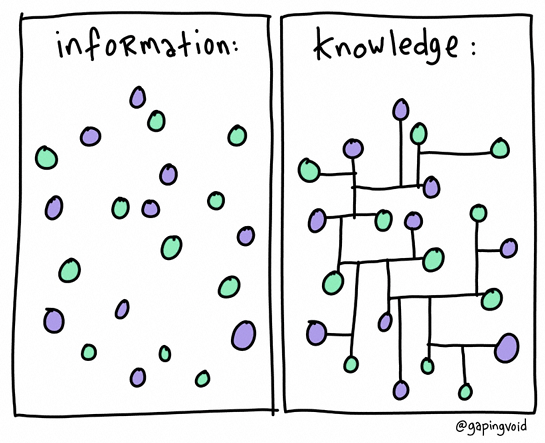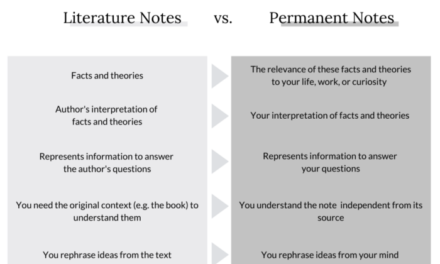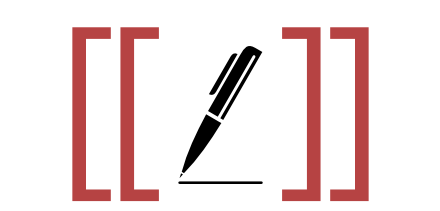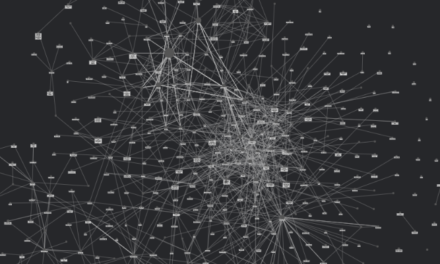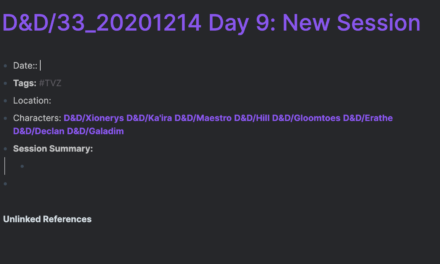How (not) to take notes
I see many people taking notes in an ineffective way.
If you collect information by highlighting and importing, copying interesting source material into your graph, putting [[]] around concepts, and tagging each page and block, this article is for you.
Because just (progressively) summarizing and tagging blocks – the method the vast majority of people use – renders most of what we read ineffectual. If this is all you do, you’ll forget most of what you’ve read and you’ll hardly be able to use this material in your writing.
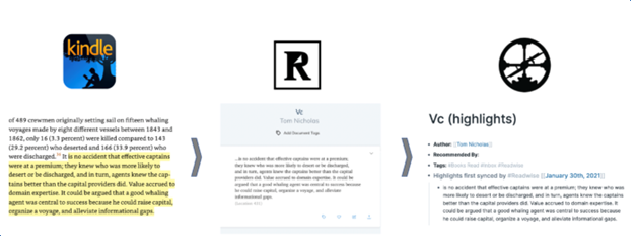
Figure 1. Notetaking through highlighting (Credit: Kyle Harrison)
Yes, even if you’ve already figured out the more efficient (but still ineffective) route via Readwise, where you don’t copy things into your graph but highlight what you find interesting and it automatically syncs to your graph; it’s still a bad way to learn. Especially if you add tags to the pages of your articles, books, and papers and their blocks and think, since this means you’ll be able to find them later, you are now able to utilize this material in your thinking and writing.
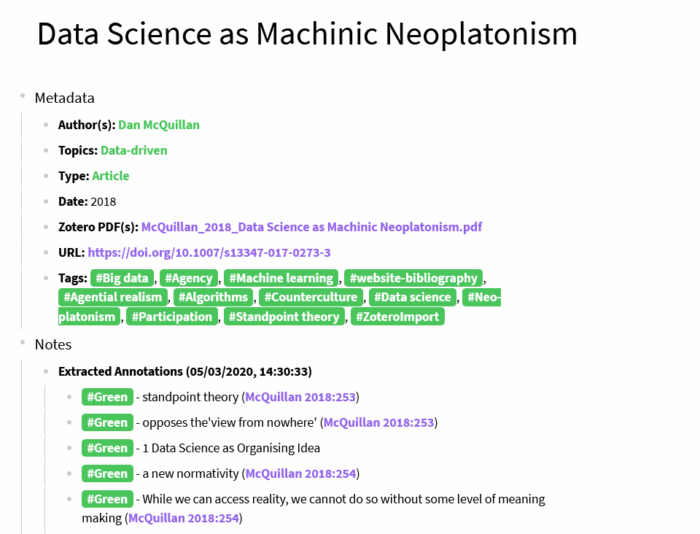
Figure 2. Tagged pages and blocks (Credit: Alix Lahuec)
My process for collecting and synthesizing information used to be exactly that: make highlights, sync them to Roam, tag the articles’ pages, and the respective blocks/highlights. And when it was time to write I would think of applicable tags for drafting the outline of an article, open their linked references in the sidebar, drag relevant ones into the outline, and draft the manuscript.
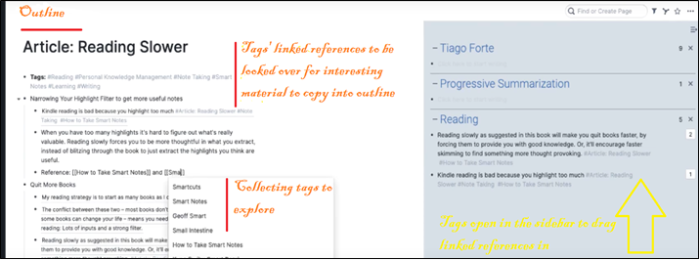
Figure 3. A writing method that doesn’t scale (Credit: Nat Eliason)
However, every time I scrolled through the linked references of a tag to collect interesting blocks for an outline, I felt like I was only beginning to process the material. I could not remember having read it, nor was I able, at this point, to explain what I had read in writing using my own words.
Specifically, this method doesn’t help you to (1) learn what you’ve read and it doesn’t help you to (2) extract the most from your reading material so you can write about it. Maximizing those two output variables requires taking notes in a specific way that I’ll teach you in this guide.
To many people, I should say at the outset, writing notes feels like a huge time imposition. But when you’re reading for information, reading without writing notes is often lost time: writing, taking notes, and thinking about how ideas connect is required for learning. Not learning from what we read because we don’t take the time to elaborate on it, is a real waste of time.
Before I go into the gist of how to take smart notes in Roam, let me explain in more detail why the highlighting-and-tagging method doesn’t work.
Benefits for learning and creative output
The highlighting-and-tagging method isn’t effective for (1) getting smarter from what you read, nor for (2) writing about what you read.
Let’s start with the former.
In this method, you process material by tagging it appropriately and putting double brackets around certain nouns or sentences that strike you as important. This means you haven’t really processed the source material at all. You have given some things their own page and filed the block away in categories represented by the tags you assigned to it.
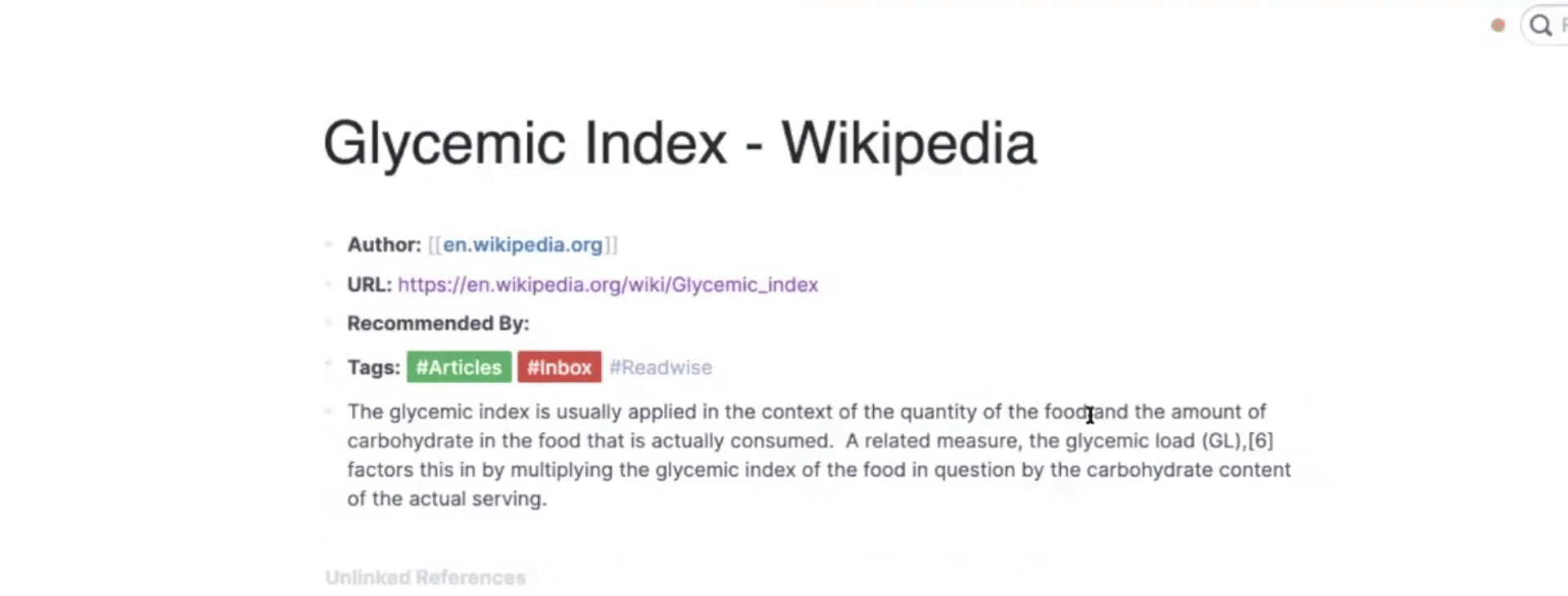
Figure 4. This is a great start, but not enough yet! (Credit: Nat Eliason)
This method is the Roam-equivalent of studying books/papers by highlighting sentences and reviewing them. A strategy which we know not to work. As Sönke Ahrens writes in How to Take Smart Notes, “[Most students] apply the very method research has shown again (Karpicke, Butler, and Roediger 2009) and again (Brown 2014, ch. 1) to be almost completely useless: rereading and underlining sentences for later rereading.”
When the purpose of reading things is to gain and retain information, this method doesn’t work because making the material your own requires far more work than that. Tagging, highlighting, bolding, and reviewing just isn’t enough.
The best-researched and most successful learning method, as Ahrens also writes, is elaboration. In essence, this means nothing other than contemplating the meaning of what we read, how it could inform different questions and topics, and how it could be combined with other knowledge. Unlike mere tagging, the idea is not to collect, but to develop ideas, arguments, and discussions. Does the new information contradict, correct, support, or add to what you already know? Can you combine ideas to generate something new? What questions are triggered by them?
Specifically, every time you’ve read a book, you should be able to answer these questions:
- What are the book’s arguments?
- What is the evidence that supports them?
- What are the book’s conclusions?
- What are the weaknesses of the book’s arguments, evidence, and conclusions?
- What do you think about the arguments, evidence, and conclusions?
- How does or could the author respond to these weaknesses, and to your own criticisms?
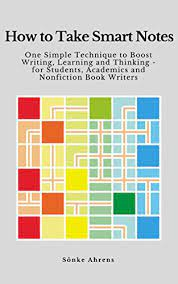
Figure 5. How to Take Smart Notes by Sönke Ahrens and the Roam Book Club, led by Beau Haan, were major inspirations in developing this system
What if you spent the same amount of time developing your nuanced thoughts about the ideas you encounter? This would be good because the second thing learning requires is that you put the material in your own words. It’s the most important thing if you want to understand and learn for the long run. It is an excellent test of your comprehension. The highlighting-and-tagging method is not. Remove jargon, explain why this information is relevant, and offer your interpretation. It sounds simple, but it is damn hard and demonstrates your understanding of the subject matter. This method might be counterintuitive. I also felt like I was getting smarter because I dutifully highlighted, exported to Roam, and tagged all my blocks.
Highlighting and tagging create a false sense of learning. In attempting to rephrase an argument in our own words, we are confronted with gaps in our understanding. Therefore, I failed this test miserably every time I wanted to use my tagged blocks for writing an essay. Rereading or reviewing these highlights does not challenge us with what we haven’t learned. It can make us feel as if we have comprehended the information, but it is merely an illusion of competence.
In short, the familiarity with a text that is gained from rereading, highlighting, and (progressive) summarization creates illusions of knowing, but these are not reliable indicators of mastery of the material. The effort to put the meaning of something in our own words is the best approach to understanding what we read because it has a test of our comprehension ‘built in’.
Now I’ll explain the issue with using your tagged highlights as source material for writing articles.
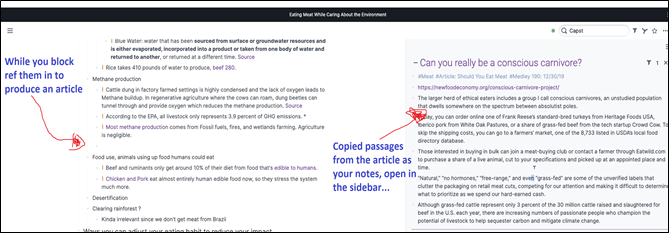
Figure 6. Creating an outline from tagged highlights (Credit: Nat Eliason)
In Figure 7, I demonstrate the issue with this method for generating creative output. I unwisely kept all my thoughts about fake news on a single page. Whenever I want to connect or add a thought to this information I would add a tag: #[[Fake News]] and it would show up in the linked references which I call on every time I want to write about a related subject. This is how I used to work. It creates situations, as demonstrated below, with 218 linked references.
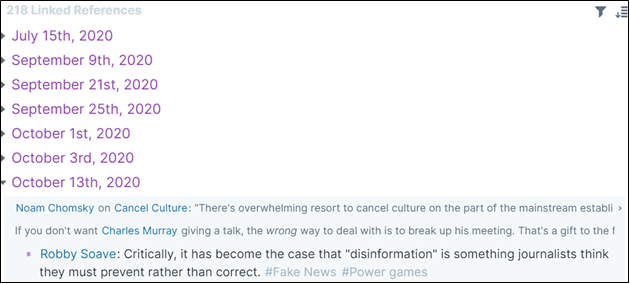
Figure 7. A portion of the extensive list of unordered linked references (Credit: Maarten van Doorn)
In this workflow, all items with a given tag are presented as being related, but it’s hard to see how. They’re a jumbled, disorganized list of blocks or pages that share a certain tag, but you haven’t yet done any of the work to see what precise claims and arguments are in there. They are linked only because they share a subject.
Tags/folders become a jumbled mess after a couple of dozen items. It is a bad way to connect information. Its structure is unordered, but your associations usually aren’t and writing outlines definitely shouldn’t be. Once your graph reaches a certain volume and/or complexity, this tactic breaks down.
Really visualize yourself sitting behind your desk. After a week of research, you’ve got the feeling that fake news is not such a big social problem, and you now want to write an article on Medium or Substack but you have218 linked references. What are you going to do now? How are you going to find the structure in this and turn it into an essay? How are you going to deal with isolated highlights, which you don’t remember having taken and don’t understand for lack of context? This is the problem.
You couldn’t get around this problem with filtering. You would still have several more rounds of work to do to find the connections, put the material in your own words so you can write about it, and discover the holes in your argument. Making smart notes requires you to engage with the material and absorb it in a much more profound fashion.
Wouldn’t it be much more efficient to do the work while studying instead of having to go back to the source material weeks later? Wouldn’t it be much nicer if the connections and your thoughts about them were incorporated in your database, so the notes are actually your thoughts instead of just highlighted source material? To accomplish this you have to make notes.
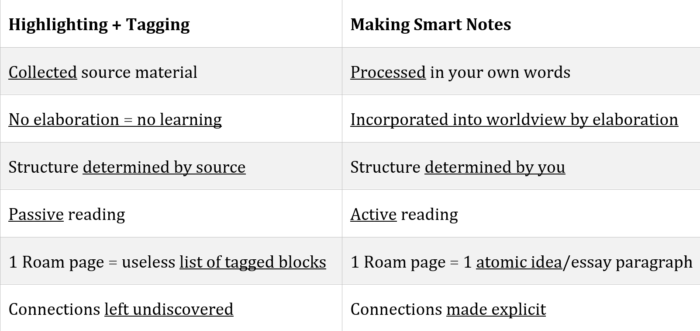
Table 1. Highlighting + tagging vs. smart notes (Credit: Maarten van Doorn)
Making smart notes in Roam
Let’s dive into how to make smart notes in Roam.
My template for doing so looks like this:
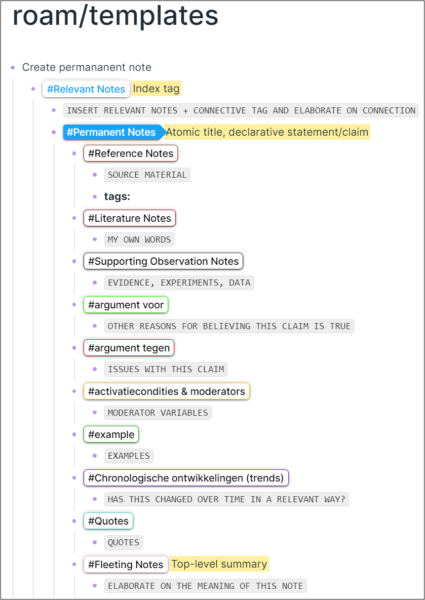
Figure 8. Note template. CSS from Beau Haan. (Credit: Maarten van Doorn)
Let me explain a bit about all these elements before I’ll detail how to make the most out of everything you read using this structure.
Atomicity: one idea per note
I will assume, in this guide, that one of your note-making goals is to turn what you’ve read into written output. Good writers know to keep one idea to one paragraph in an essay. If you begin to transition into a new idea, it belongs in a new paragraph. Likewise, it’s a rule of good note-taking to keep one thought to one note. This is called the principle of atomicity. These two rules are closely related because their combination means that one note should equal one paragraph in an essay (one idea, one node in a chain of thought).
This is immensely useful because keeping it to this level of specificity makes it easy to use the notes for your creative output and for building thought trails. These are ultimately the same thing as Paul Graham says, “Essays just are cleaned up chains of thought.”
This link for writing tests whether you’re note-making effectively. How easily can you plug-in your notes into your essays? If you find that you often need to rework it or spread it over multiple paragraphs, your notes are probably too vague or too broad.
More importantly, if that’s so, you’ll hardly be ready to use material processed non-atomically in your writing, regardless of your level of comprehension of it. In the list of linked references of the ‘Fake News’ tag, for example, every block could refer to anything within my fake news research. I have to review them all to get a grasp of what I wrote and thought about a specific topic. This means extra work before I can use this in my creative output. It will require extra work to read it all to get to the pertinent information (if you’re lucky enough to find it in there), isolate it, and see how it connects to the rest of your graph. If getting information out of a page takes too long, how helpful is it in organizing your thoughts? Also, due to the lack of specificity, you might not notice when you encounter some new idea about one of the notions contained within.
This is another reason atomicity is important in communicating with your notes. Atomic notes that are to the point make it easier to form connections across topics and context. Atomicity fosters re-use, which in turn multiplies the number of connections in the network of notes.
Conversely, notes that are too broad or vague – like a list of 218 linked references – will have trouble functioning in a chain of thought. The relation to other notes which (as I’ll explain later) will need to be specified in the ‘Relevant Notes’ section – such as “an argument against this is…,” “evidence in favor of this is…,” “this is explained by” – will be muddied. Because, what exactly is being argued against, proven, or explained in a note that expresses more than one idea, or is it a list of tagged blocks? Which of the 218 things are we talking about here? It won’t be clear when the note contains multiple thoughts. It also won’t be able to talk to other notes and function as a mental hook that you can attach other ideas and pieces of information.
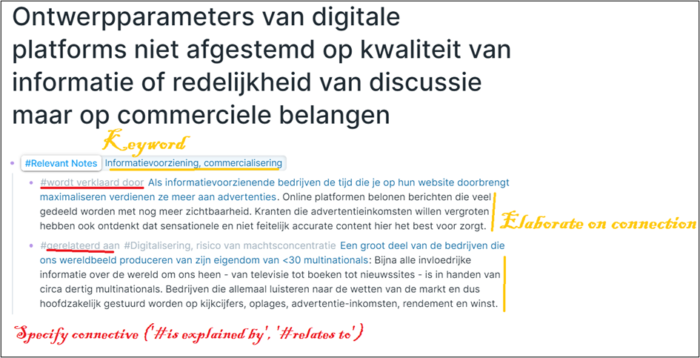
Figure 9. Relevant notes section annotated example in Dutch (Credit: Maarten van Doorn)
Declarative statements as titles
![]()
Figure 10. Note titles with atomic declarative phrases (Credit: Maarten van Doorn)
Essentially, there are two approaches to titling your notes. Some people use ‘concept titles,’ such as “Political campaigns” or “Plato.” When they encounter information about this subject, it goes in the note. Of course, this is equivalent to highlighting + tagging. You end up with an unordered list of blocks/passages, whether on the page itself or in the linked references section. Others use claims as titles, such as “Political campaigns are generally ineffective at changing people’s minds.” There are a couple of reasons why the claims approach works better.
First, the title should tell you what’s in the note. ‘Concept titles,’ such as “Political campaigns” don’t do this. They just inform you in a hand-wavy way, “Hey, there’s some general information about political campaigns in here.” But what exactly is it? This means I’ll need to interpret what it is any time I might want to link to this note. This is time-consuming, you’ll tire of it and the note slowly dies.
This lack of specificity has other downsides we already covered. You can’t insert the note in a chain of thought and you can’t properly connect it to other notes. When a note contains lumped-together information related to a topic, it’s unclear how to use it to make an argument. That’s because the note contains unorganized, general information about multiple claims and ideas. How can you connect it to other notes with relationships such as “Evidence against,” “Explanation of,” and so on? It would be unclear which of the multiple claims and ideas would be explained disproven, etc. which would make the link structure a total mess and, as a consequence, practically useless.
Using complete phrases as note titles helps maintain atomicity. It’s often a sign that thinking is muddy or that a note is about several topics if you struggle to summarize it in a sharp title. By contrast, if you use concept titles, it’s almost inevitable that your note will contain multiple ideas.
Using an example, it’s very likely that the collection of information on political campaigns contains information about the claim that “The hypodermic needle model is a model of communication suggesting that an intended message is directly received and wholly accepted by the receiver” and the claim that “Campaign interventions seem, as a rule, to have no effect.” This is what you’ll encounter after a few minutes of googling, and you might be tempted to just drop it in that note. But for building chains of thought, it’s much more effective to split these two propositions into separate notes and add the “argument against” connective in the Relevant Notes section.
Index words
![]()
Figure 11. Building a keyword index (Credit: Maarten van Doorn)
Before the title, use an index-word. Beau Haan taught me this, and How To Take Smart Notes mentions it as well. The goal is twofold: to give your future self a quick thumbnail of what’s in the note, and to make sure you can find the note through the keyword index, which is the central ‘hub’ of the system!
Keywords are especially helpful because they force you to consider in what context the note is relevant. For example, I have a note which claims that “Restrictions on speech hinder truth-finding because banning some (hurtful) statements makes their discussion and refutation impossible.” For instance, if you ban hurtful statements such as “Homosexuality is a disease,” the person who believes this can never say this, so instead of people arguing with him and convincing him of its falsity, he’ll keep believing it. This note could have many index words, like “cancel culture” or “freedom of speech”. So, how do you choose?
Ahrens writes: “The way people choose their keywords shows clearly if they think like an archivist or a writer. Do they wonder where to store a note or how to retrieve it? The archivist asks: Which keyword is the most fitting? A writer asks: In which circumstances will I want to stumble upon this note, even if I forget about it? It is a crucial difference.” Keywords should be assigned with an eye towards the topics you are working on or interested in, never by looking at the note in isolation. You have to think about the questions and problems already on your mind to which a new note might contribute. I research the constitution of knowledge, so in this instance my primary interest is truth-finding. Hence, I labeled it “Truth-finding, freedom of speech.”
In my experience, most notes will be found through other notes or structure notes (see below), not through the keyword index. I generally use keywords to give me a hint about the claim I make in the note. The thumbnail helps underscore the content of the note as I’m scrolling through structure notes and adds to the efficiency of the process. For example:
![]()
Figure 12. Keyword-as-thumbnail example (Credit: Maarten van Doorn)
I ask myself, “Why did I make that claim about peer review?” When I see the keyword it triggers me to remember that it was because of the low inter-rater reliability (which indicates the reviewers are hardly picking up on a latent “quality” variable of a paper).
When I feel confident, I use a “concept handle” as a keyword. As Scott Alexander describes, a concept handle is a memorable or catchy noun phrase representing a complex or abstract topic. For instance: “applause lights,” “Pascal’s mugging,” “Moloch.” Here are some examples from my database:

Figure 13. Keyword-as-concept-handle example –Seeling Like A State (Credit: Maarten van Doorn)
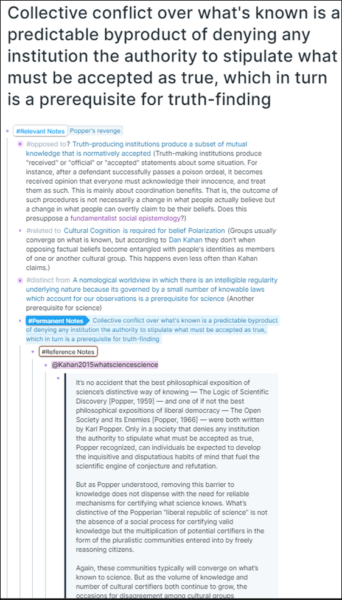 Figure 14. Example of concept handle (Popper’s Revenge) with title, relevant notes, and reference note filled out (Credit: Maarten van Doorn)
Figure 14. Example of concept handle (Popper’s Revenge) with title, relevant notes, and reference note filled out (Credit: Maarten van Doorn)
The concept handle here is “Popper’s revenge.” Also, notice how I elaborate on the connection to other notes in the Relevant Notes section. Doing this is important! The keyword, by the way, for the third related note, is “Ionian Enchantment” – another concept handle.
As Ahrens indicates, choosing your keywords is a matter of what works for you and what topics interest you. The most important rule to keep in mind is that they should help you improve your thinking. Experiment with this for yourself and don’t make it complicated (as the inter-note associations are more important).
The keyword index
Next, collect and transfer all your keywords to a keyword index page in your Roam graph and sort them alphabetically for easy retrieval.
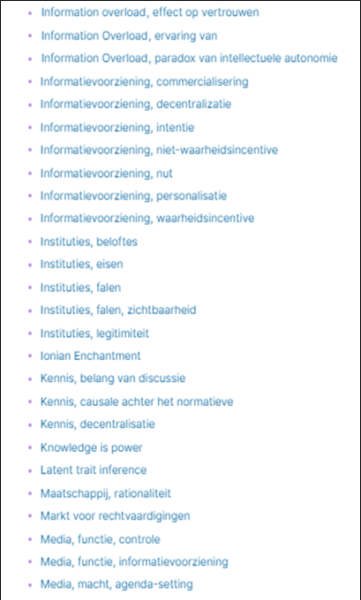
Figure 15. Partial screenshot of my keyword index in Dutch (Credit: Maarten van Doorn)
As Niklas Luhmann, the creator of the famous Zettelkasten note-taking method realized, “Considering the absence of a systematic order, we must regulate the process of rediscovery of notes … Therefore we need a register of keywords that we constantly update.”
The index is insurance that you’ll always be able to find the note. It’s the place every note is represented, through its keyword!
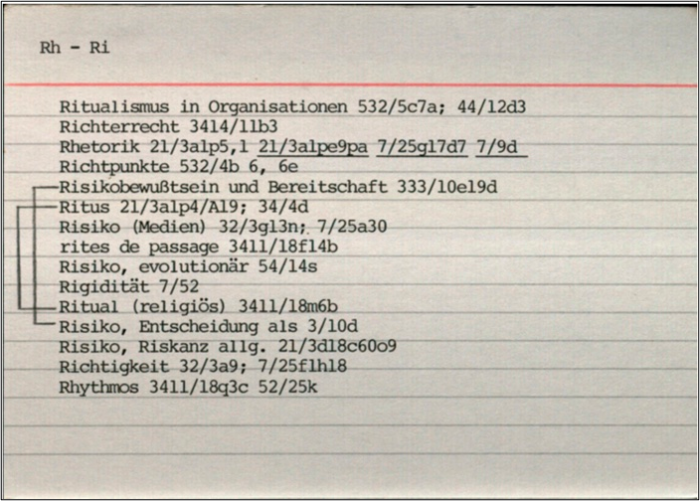
Figure 16. Niklas Luhmann Index Table of Keywords (German) © Bielefeld University
It’s also helpful to scroll through to locate interesting possible links to new notes you’ve written. In this sense, keywords are meant mostly as a “jumping-off” point. The primary navigational device is connections between notes. Because the index should not be used as an archive, but as a system to think with, the references between the notes are much more important than the references from the index to a single note. As you’ll soon see, the organization of the notes is mainly in the network of references so all we need from the index are entry points.
Reference notes
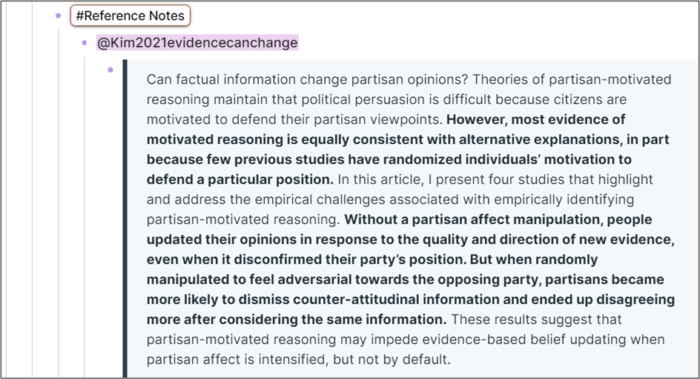
Figure 17. Reference note example (Credit: Maarten van Doorn)
Reference notes contain the verbatim quote from the source, formatted using the reference manager of choice, such as Zotero. Because they are not in your own words, reference notes are of secondary importance. It can be convenient to be reminded of where the idea expressed in this note originated, but it is mainly meant to help with writing my notes and to avoid plagiarism! If you read many related papers you’ll have multiple reference notes for the same permanent notes. As multiple papers discuss the same idea, or multiple experiments test and are evidence for or against the same claim. You don’t need to make a new note for everything you read! Review your existing notes first. The best way to do this is by reviewing relevant structure notes (which I’ll cover later on).
Literature notes
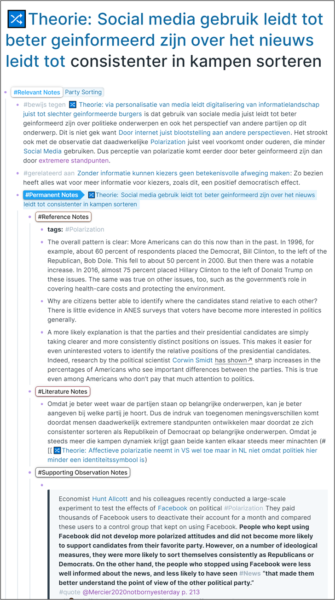
Figure 18. Example of relevant, reference, literature, and observation notes. Note the language difference between the source material (English) and my own words (Dutch) (Credit: Maarten van Doorn)
Literature notes are where the magic happens! The goal of this section is to use your own words to summarize and paraphrase a key point made in a source. Again, to truly understand what you have read, you have to translate it into your own words. Practicing the skill to delineate my declarative thoughts from what is written in the book is hugely beneficial for understanding.
Indeed, the core of effective note-making is quite simple. Whenever you read something, make notes about the content, elaborate on it and integrate it with your existing notes. Write down what you find interesting and use your own words. That’s the most important thing of all.
Taking notes when reading a text may be common for most, but deliberately formulating these notes in a way that makes it possible to combine them into a developed piece of writing will uncover your level of understanding. To answer the daunting question “Did I really understand how the text does X?” you’ll have to use your own words to say what the text communicated to you. If you get stuck, you know that something’s missing and that you’ll need to continue to look up details until you get the missing piece. This makes making literature notes a form of deliberate practice as it gives us feedback on our understanding or lack of it and again indicates summarizing the pertinent points of the reading material in your own words is the best approach to understanding what we read.
For a note to be useful for writing it must un-stick from the text. It must be able to stand on its own – be independent and be able to be part of several sequences or relate to several notes – with only a reference to the source text. Make sure your literature notes are written in a way that can still be understood even when you have forgotten the context they are taken from.
Rephrasing key arguments is an excellent way to integrate your knowledge and to have notes that you can rely on so you don’t have to go back to the source text again when writing. Write your understanding of the passage(s) in your own words, and write as if you were going to publish it so that you can effortlessly use it later when writing.
A prompt I’ve found to be useful is to look at the reference note and ask yourself, “So what does this say?” By focusing on what is interesting to me and keeping written track of my intellectual development topics, questions and arguments will emerge from the material without force. Another tip: when you’re not a native speaker of English, write the literature note in your language! This forces you to use your own words since you can’t copy and paste
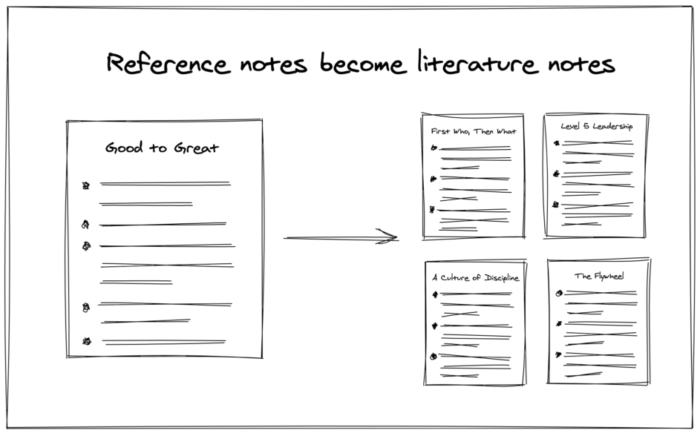
Figure 19. Reference notes become literature notes (Credit: Zakk Fleischman)
Supporting observation notes
OK, so now we have the claim in the title, saved the source material, and put it into our own words. This means we’re done, right?
No, because you can’t write an article by just stringing together declarative statements. You can’t state, for example, the fact that “In experiments, most participants are capable of discerning true from false headlines.” You need to back that up with the description and data from the actual experiment and ideally, should also give the reader a feel for how such an experiment works. So that needs to be in a note too.
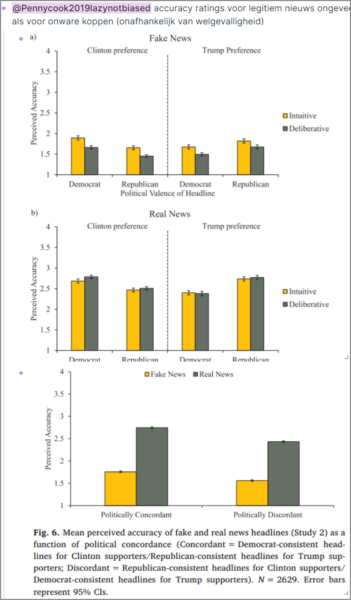
Figure 20. Results-only observation note (Credit: Maarten van Doorn)
The biggest difference between note titles and observation notes is in scope. A claim links concepts or their asserted properties or states a generalized, extrapolated statement about a subject. (e.g. the reasons people report believing factually incorrect things on surveys). In contrast, observation notes describe a specific event, for example, “When 419 participants who identified as Democrats or Republicans could have their name entered in a drawing for a $200 Amazon.com gift certificate for each correct answer on a survey with factual political questions, they suddenly got most things right and partisan divergence reduced by 60%.”
I usually add a bit of interpretation in my own words. In this case, it would be, “Yet if these survey responses reflected actual beliefs, then paying partisans to answer correctly should not affect their responses. Without adequate incentives, the motivation to give an answer that supports one’s political party may outweigh the motivation to give an accurate response.”
Observation notes should be as close to “the data” as possible, and similar to how results are described in results sections of academic papers. That is: include evidence for your such as figures, data items, tables, or quotes that are the basis for observation, as well as methodological details that are important for understanding and evaluating an observation note. Following Joel Chan, I take screenshots for such ‘context snippets’.
I’m often a bit lazy and forego contextualizing the observation note fully. I will instead describe the result in one sentence, linking to the data, like so:
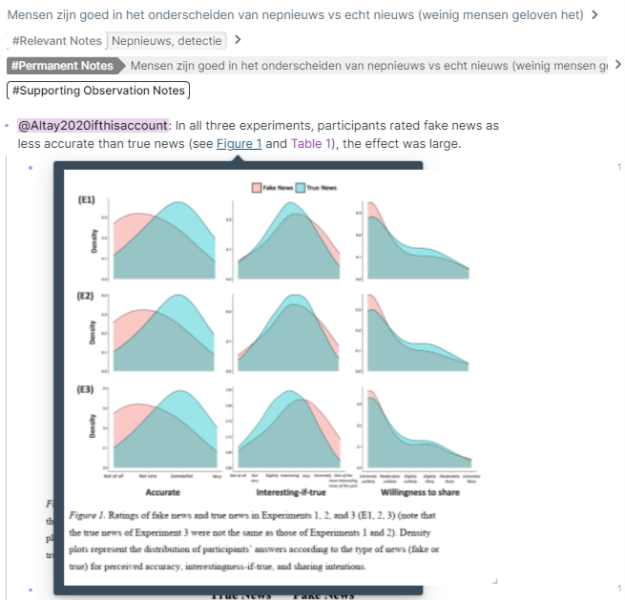
Figure 21. Example II of observation note (results only requires that you can read/translate those numbers) (Credit: Maarten van Doorn)
I’ll collapse the parent block of the paper, and hyperlink the block references of the figure and table. This makes them show on hover, which means I can easily get more detail!
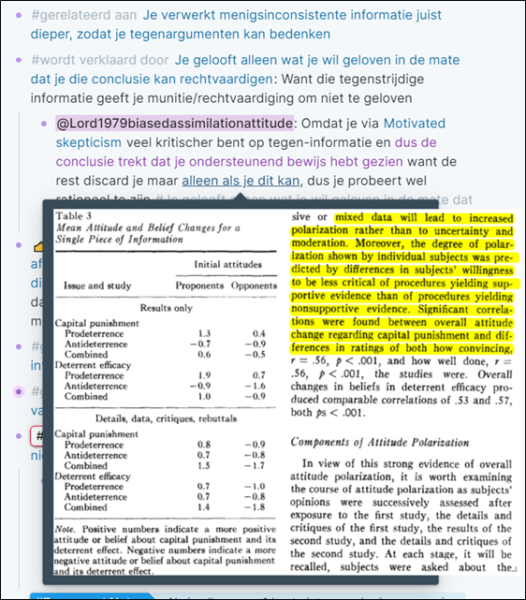
Figure 22. Hyperlinked context snippet (Credit: Maarten van Doorn)
To be honest, this slight laziness means that if I want to publish about some experiment or other, I almost always need to go back into the paper to know exactly what they did. In my defense, most studies in my database are in cognitive science, which usually follows one of a few design templates with which I’m familiar. So, I have an intuitive sense of how the evidence was produced. Moreover, if you aim to build up broad knowledge about some field, or to answer a quick question such as how prevalent the belief in fake news is, processing and synthesizing many observation notes is more efficient than going into the nitty-gritty of each experiment.
Here is one final example by Joel Chan, taken from his super insightful paper on knowledge synthesis. See for yourself if you understand what’s going on here.
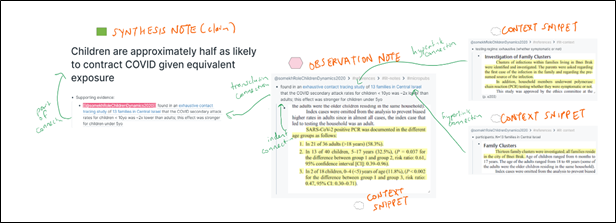
Figure 23. Taken from Chan (2020), “Knowledge synthesis: A conceptual model and practical guide” (Credit: Joel Chan)
Arguments, moderators, examples, chronological developments, and quotes
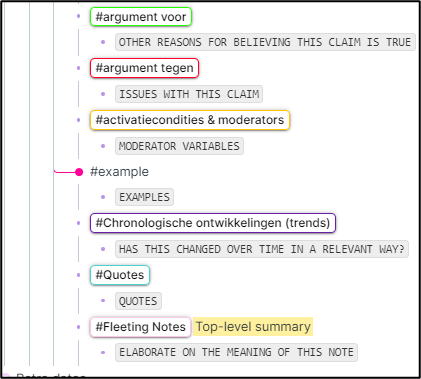
Figure 24. The remaining categories (except Relevant Notes) (Credit: Maarten van Doorn)
Why use the categories mentioned so far? I chose the categories I use because I’ve found that I want that specific information at hand when I think about or write about a particular statement in my database. Similarly, I find it useful to have things as chronological developments; relevant arguments and moderators; and, examples at hand.
Cool examples of things, historical trends, or arguments that seemed related but not worth their own note have always had an awkward place in my note-taking policy. You want them in your database, as it’s very helpful to not have to develop from scratch examples or relevant considerations in favor or against some claim. But, the choice between either making a note or losing all of them seemed overly restrictive. So now when I come across something that’s obviously relevant for a claim in my database but not interesting enough to be its own note, I add it in my own words in the right category. In this sense, the note functions more like a peg on which you hang relevant information.
Admittedly, there’s a slippery slope here. For aren’t “X has increased the last 30 years” (chronological development) and “The relationship between X and Y only occurs under conditions Z” (moderator) or “X is an argument for/against Y” (argument) different ideas than the original claim, and so per atomicity, should get their own note? Well, yes, they are. But atomicity applies most strongly to the claim in the title – the thing you’ll write your paragraph about, the building block of your argument, the claim you’re connecting to other notes. That needs to be “one thing”. And everything in the note should be there to support or contextualize that core claim. It can’t be “its own thing” talking to other notes. So as soon as you find yourself wanting to refer to, communicate with something that’s in the body of the note but is different than the title, you should immediately give that thing its own note. This happens quite often. The argument for and against sections are more often filled with page refs to other atomic claims than with plain text.
This potential pitfall is why I don’t use the – perhaps more commonsensical – solution of putting such information in the body of the note, perhaps under a “Description” parent block. I’m afraid that when there are no constraints, I’ll be tempted to put too much stuff in there. The categories force me to make sure that everything in there has a specific connection to the claim and relates in a relevant way. This helps me avoid the “This is kind of related, I’ll just drop it in here because I don’t want to lose it” thinking mode. In my experience, this collectors-fallacy temptation can become quite big, but succumbing to it makes your notes unorganized and unworkable. The standardization is meant as a counterbalance to this. The pre-defined categories function as restrictions for what you’re allowed to add to the note.
In practice, some categories will remain empty. For most notes you’ll fill out, in the beginning at least, only the reference notes, then rephrase it in your own words in the literature notes, distill a declarative phrase making a strong claim as a title, and link relevant notes. In doing all this, however, you might need to make use of the fleeting notes section.
Fleeting notes
I often begin by writing a note without knowing what the title will be. There is the reference note, or some other to-be-processed reading material which I need to (1) paraphrase in my own words, (2) elaborate on and (3) connect to other notes, but you cannot rephrase anything in your own words if you don’t understand what it is about. Sometimes this requires that you think deeper about the statement. Fleeting notes are where you can think out loud about the statement on the page.
The fleeting notes section is you, talking to yourself. You can ask about the meaning of certain concepts, consider the validity and soundness of an argument, muse on your own opinion of this statement, and so on. Everything is allowed. It’s amazing how helpful such literal thinking, not connecting the dots in specific categories but ruminating on a statement, thinking about it, can be. By doing this, you will elaborate on the statement’s meaning, which will make it much more likely that you will remember it. It also gets you an increased capacity to notice points for intellectual progress. I recommend taking at least five minutes to do this for every note you create!
There’s just one rule: as soon as your thinking coughs up an argument or perhaps even another declarative or imperative phrase making a strong claim that you want to stand on its own in your database, take the proper action. Otherwise, the argument or claim will die in the opaqueness of the fleeting notes. Add the consideration to the relevant section if it should be in there, amend your literature notes if you’ve changed your interpretation of the source material, or create that new permanent note.
Relevant notes
The Literature Notes section is the most important one when it comes to learning benefits. The Relevant Note section is crucial for writing.
A good note-taking method should not only make it easy to find notes quickly but should also point out relevant notes when you need them. After all, we can’t write articles from isolated claims but have to form chains of thought. You might have noticed the current system has no one central index, except for the keywords. So, if note X doesn’t regularly occur in the “Relevant Notes” section of other notes, how will you ever come across it and use it in an essay? You enable this by finding a relevant note, which you add in this section, and then specify the connection inside the body of the note.
Luhmann even claimed that “every note is only an element which receives its quality only from the network of links and back-links within the system.” Why does the note receive its quality from its connections? The more connections a note has, the more information becomes available, the larger the internal network of links you’ve succeeded in activating.
Remember, our goal is to build chains of thought. With that in mind, imagine yourself looking at some note/claim that mentions few other notes in the Relevant Notes section. Which of your arguments does it add to? Which thought sequence does it figure in? What does it oppose, support, or explain? When does it come up? What’s its use? Imagine sitting there, staring at the screen and asking yourself, “What am I supposed to do with this note?”
You can use this as a criterion: if a note is not made in the context of some chain of thought, or other, it’s very unlikely that you’ll ever need it for your writing. So why bother?
This may seem overly restrictive, but, trust me, it’s not, so suck it up and only takes notes you care about! Resist the collector’s fallacy. It’s not a coincidence that Luhmann advised being very selective in which (thoughts contained in the) source material you convert into notes.
So, you should link your notes. Don’t just link to the note coming before and after it in the argument you’re building; a claim can figure in multiple chains. The system is not only for working out existing chains of thought, it’s also for discovering new ones. And, by linking two related notes regardless of where they are within your database, surprising new lines of thought can be established.
As this indicates, there are two broad kinds of links. “Divergent” ones, where the linked notes do not (yet) appear (consecutively) in a chain of thought, but share an interesting connection nonetheless, and “convergent” ones, where the notes are linked fairly directly because they’re in a chain of thought.
More often than not, a new note directly follows up on another note and becomes part of a long chain of notes, so convergent links are more prevalent. For instance, let’s say I’m processing some papers about fake news and make the following notes:
-
Digitization increases the production and spread of misinformation
-
Due to digitization people have more resources available to them to evaluate the veracity of information they come across
-
False stories are only a problem to the extent that they are believed
-
In experiments, most participants are capable of discerning true from false headlines
-
On surveys, a surprisingly high number of people express agreement with some of the more widely disseminated fake news items
-
Most? people who purport to believe fake news don't really do but claim to in order to express some attitude or tribe membership
-
Surveys often lead to overreporting as a consequence of belief construction because they lead respondents to report believing things about which they actually have no opinion
These come together fairly naturally in a chain of thought. You might even write an essay based on this outline! So, it’s not difficult to insert the “evidence in favor,” “evidence against,” “explains,” “is explained by” connectives and populate the “Relevant notes” section here. Likewise, it will be easy to connect the parts when it’s time to write the piece.
But to make the note even more useful, it’s wise to also connect it to notes outside its direct chain of thought. Because this connectedness will provide us not with isolated facts, but with lines of developed thoughts. So you might be surprised where you end up roaming around. Furthermore, this way of working with your database will become less about retrieving specific notes and more about being pointed to relevant facts and generating insight by letting ideas mingle. You’ll develop connections between disparate domains you’d probably not link off the top of your head. Your database will confront you with related notes you did not look for. This is a very significant difference that becomes more and more relevant over time. The more content it contains, the more connections it can provide, and the easier it becomes to add new entries smartly and receive useful suggestions.
It’s only by understanding how this claim fits in with the other claims in your database that you’ll start to grasp its importance. Only when you see which other claims it opposes, supports explains, assumes, or relates to, does the claim come alive in your mental model. Processing relevant notes means what you’ll write about a particular claim of this note will be of high quality because you see “what it does” in your worldview. As Ahrens explains: “Sometimes, we discover that the source given in a text is not the actual source. Sometimes, we discover that the interpretation of a study conflicts with another interpretation, making us realize that the study is so vague that it can be used as proof for two contradicting interpretations. Sometimes, we find two unrelated studies that give proof to the same point, which is not a correction, but an indication that we are on to something. Adding new notes to old notes and being forced to compare them leads not only to a constant improvement of one’s work but often discloses weaknesses in the texts we read.”
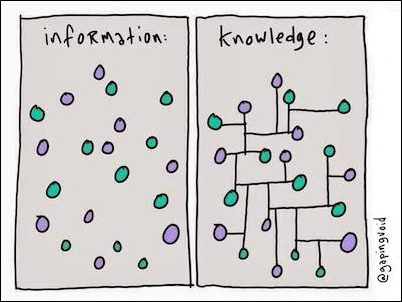
Figure 26. Connections are the difference between information vs. knowledge (Credit: @gapingvoid)
Pushing ourselves to add lots of links between our notes makes us think expansively about what other concepts might be related to what we’re thinking about. It creates pressure to think carefully about how ideas relate to each other. I should stress that this integration will take longer than you think. To add a new note, you have to think about and find other notes to link to that expand the arguments in your note. You also need to find other notes and sequences that would benefit from a link to the new note. Particularly central ideas which as Luhmann wrote, “can have many links which show on which other contexts we can find materials relevant for them.”
As Christian Tietze from zettelkasten.de has also experienced: “I found that the more I know about a topic, the longer integrating a note properly takes. After I decide which keywords fit, I query the archive for similar Zettel notes and try to find direct connections so I can add links to the notes themselves. Sometimes, I have to follow existing trails for a while until I discover a whole network of information to which the new note contributes. All this takes some time, but it’s a fun and adventurous endeavor, in an Indiana Jones-way of uncovering forgotten secrets.”
Integrating notes will become the bottleneck of your workflow sooner or later, too. Writing notes with a dense associative structure simply can’t be done without rereading and revising your past writing, as finding the right links requires reading old notes. As mentioned, this extra step probably means that this system takes more time than other systems, but it also means that this type of note-taking approximates spaced repetition.
Type of connections
As I’ve hinted at a few times, you should specify the explicit relationship between these notes. Does a note support or contradict the other? Does it speak to an assumption, underscore a gap in awareness, or posit a new line of exploration?
You will need to use connectives for this in the Relevant Notes section. Don’t just drop notes there, but explicitly codify their relationship. I’ve mentioned a few of these connectives already – “Explains,” “Is explained by,” “Supports,” “Opposes,” “Is evidence for,” “Is the evidence against,” “To be distinguished from,” and so on.
Yes, it’s OK to sometimes just say “Is related to.” This is helpful to remind yourself of a connection between notes, especially when they’re in different areas. Building such connections – which you’ll probably discover using the keyword index or structure notes – might also in itself spark new ideas. Just view distilling the exact nature of this connection or how you can apply it in an essay as a subsequent task. The “related” tag is probably something you need early on, but be careful to not do too much of this!
Inserting a connective is not enough. Don’t just stipulate any relationship, but elaborate on the connection for a few sentences. Remember that elaboration is the most successful learning method and elaboration is nothing more than connecting information to other information in a meaningful way. Ask yourself: Why does this note explain the note I’ve said it explains? Why is this note an argument against that other note?
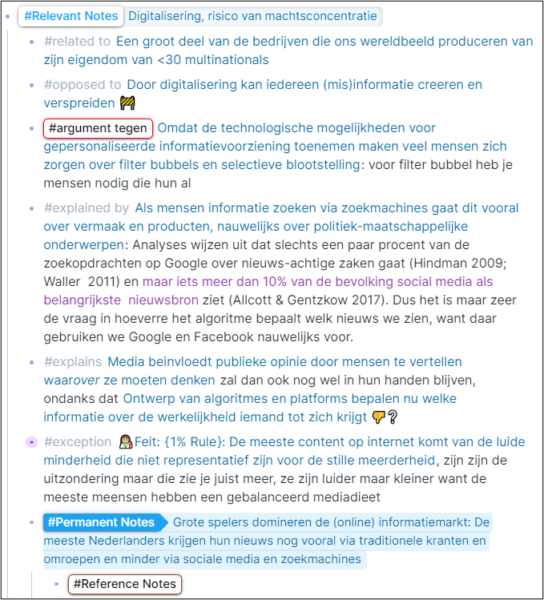
Figure 27. Relevant Notes section example (Credit: Maarten van Doorn)
In writing, having these connections specified helps to keep your flow of ideas strong. You already have the structure of the argument explicit in your notes! Not only is the argument nice and tight, but the role of each part in the whole is telegraphed beforehand. All that’s left is to insert words such as “Also,” “But,” “Nevertheless” corresponding to which connection applies and there you are, that’s three connected paragraphs.
Structure Notes
That’s a wrap, folks! You filled out all the categories and birthed a new note.
But, where do I put it? And how, by the way, do I find all these relevant notes you were just talking about?
The answer: Structure notes. (Also known as “Outlines” or “Overview notes”).
In a database of notes, the individual notes contain (ideally) singular, atomic grains of knowledge. Those are joined with connections of many kinds and form strings of thought. At each node, you can go to various places. There’s no structure. This is cool, very Roam-like, but in writing, we need a linear argumentative structure.
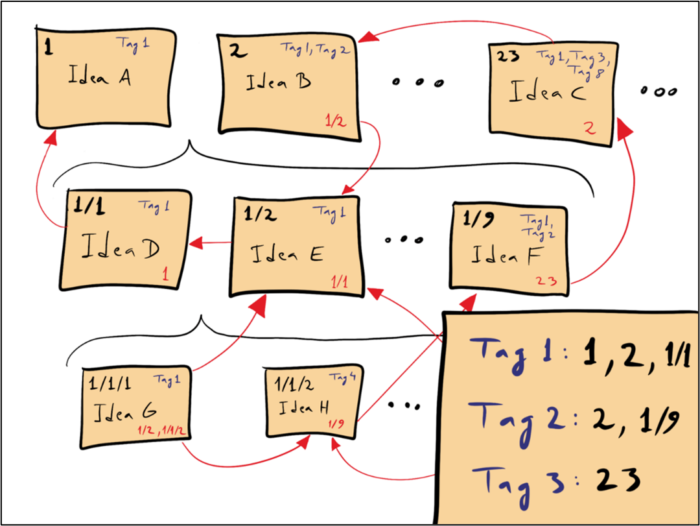
Figure 28. Non-linear connections (Credit: Zettelkasten Wikipedia page)
Secondly, getting a grasp of what I wrote and thought about a specific topic requires specifying the structure of notes in an external place, so you can see it. Only if the connections are somehow fixed externally can they function as models or theories to give meaning for further thinking. Your mind needs to have the structure presented objectively and externally. Thought trains become tangible by making them explicit. So, you must connect notes to make a web of knowledge, but also create structures so you stay in control of the growing knowledge web.
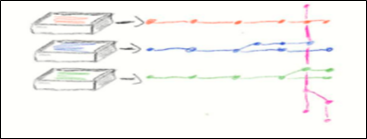
Figure 29. Taken from The Zettelkasten as a Lattice of Thought Strings (Credit: Gerrit Scholle)
Although you can add more structure by using headings or connectives on the structure note page, in essence, a structure note is just a chain of thought arranged linearly. For example, if note A is an argument for note B, which is explained by note C, and so on, I can capture this structure explicitly on a structure notes page. This way, I’m sure to realize the connection between A and C when I revisit the topic. Otherwise, I might not, because you can ‘look one note ahead’ on the note page itself.
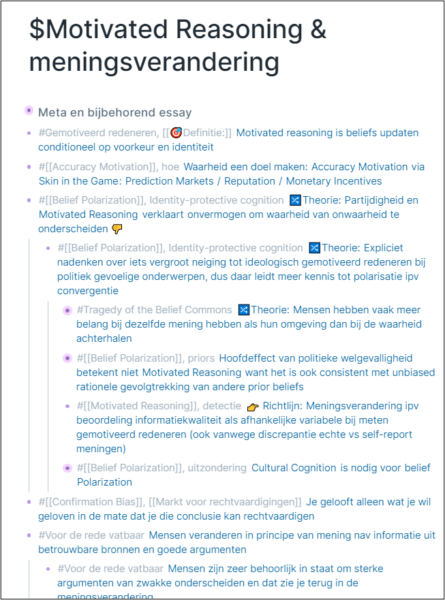
Figure 30. Structure Note partial example (Credit: Maarten van Doorn)
The gist is: there are emergent structures that underlie every self-organizing body of knowledge, and when you find one, you want to save it for your future self. This is why Ahrens stresses that “It is important, though, to understand outlining not as the preparation of writing or even as planning, but as a separate task we need to return to throughout the writing process on a regular basis. We need a structure all the time, but as we work our way bottom-up, it is bound to change often. And whenever we need to update accordingly.”
More generally, structure notes are extremely helpful to orient yourself within all the lines of thought you have. This is why I use them as an entry point into a topic that has already developed to such a degree that an overview is needed or at least becomes helpful. So begin by (1) checking relevant structure notes so that you can write your note with an eye towards already existing notes; (2) write a new note, title, and keyword, as we discussed above; (3) notice how it related to other notes, and then (4) add it to one or more structure notes you’re maintaining.
Structure notes also come in handy for noticing how the note relates to other notes. This is because they offer a birds-eye perspective of what notes are “in the vicinity,” what notes you have on the topic and what the broader structure looks like. Definitely, review structure notes to find relevant notes. The other thing you should do is click through on chains of thought in your database that catch your interest while looking for relevant notes. You may notice, “Oh, this explains that, how fascinating! Oh yes, that was an argument for this, let me see what that note was again and what it is all connected to.” A third method is leveraging the keyword index.
Writing
In summary, structure notes help you (1) locate yourself in your database and (2) find connecting notes. , Thirdly, they are an in-between step towards the development of your essay. As Christian Tietze observes, “When I create a [note], I search through the folder for an outline that could make use of this [note]. If I don’t have an outline in my folder that fits, I create one. Now I can see articles, books, and other writing projects emerge as a consequence that I read texts and create [note] without any specific intention in doing so.”
There you have it. Near-complete writing projects will naturally emerge because essays just are cleaned up chains of thought. Instead of widening the perspective to find as many possible lines of thought to which an idea might contribute, it is now about narrowing the perspective, making a decision on one topic only, and cutting out everything that does not directly contribute to the development of the text and support the main argument.
As I stated, the main objective of note-taking is creative output. However, I’ve hardly mentioned the writing process in this guide. This is for two paradoxical reasons. On the one hand, this is a post about how to make the most out of what you read, and writing deserves its own guide. On the other hand, if you build solid chains of thought with well-written notes, it’s not hard to turn those into a rough draft. For this, I’ll mention Ahrens’ advice to “translate your notes into something coherent and embed them into the context of your argument while you build your argument out of the notes at the same time. Detect holes in your argument, fill them or change your argument.”
So, if you’re doing a decent job maintaining your structure notes, going from notes to a draft is a small step. So, how exactly to turn such a draft into well-written prose? Well, that does fall outside the scope of this article.
Putting it all together: How to take smart notes in Roam
- Structure note: Get an overview of your relevant knowledge by eyeballing the lines of thought in relevant structure notes. Don’t be afraid to add to them if you deem that necessary.
- Reference note: Paste in the reference and citation.
- Literature notes: Process it, make it your own, put it into your own words! Preferable to spend a few minutes in the fleeting notes section to make this more effective. Connect the reference note to prior knowledge and try to understand its broader implications.
- Title: Create a title summarizing the core claim
- Keyword: Make sure you will be able to find this note later by both linking to its keyword from your index and by making a link to it on other notes.
- Mental hook: Fill in the other categories.
- Relevant notes: Search through the keyword index and structure notes, integrate the new note in your database by adding relevant notes and connectives. Elaborate on each connection: make sure the act of linking between notes is explicit through manually written cross-reference. This makes note association intentional in contrast to the use of tags.
- Permanent notes: In writing these notes with such a dense associative structure, actively reread and revise your past writing, this type of note-taking approximates spaced repetition
- Structure note: Add the new permanent note to structure notes that benefit from it.
- Outline: You are now excellently positioned to effectively outline.
Traditional notetaking doesn’t work, but this does.
Thanks to Joel Chan and Terese Brewster for helpful feedback on an earlier draft of this guide.

